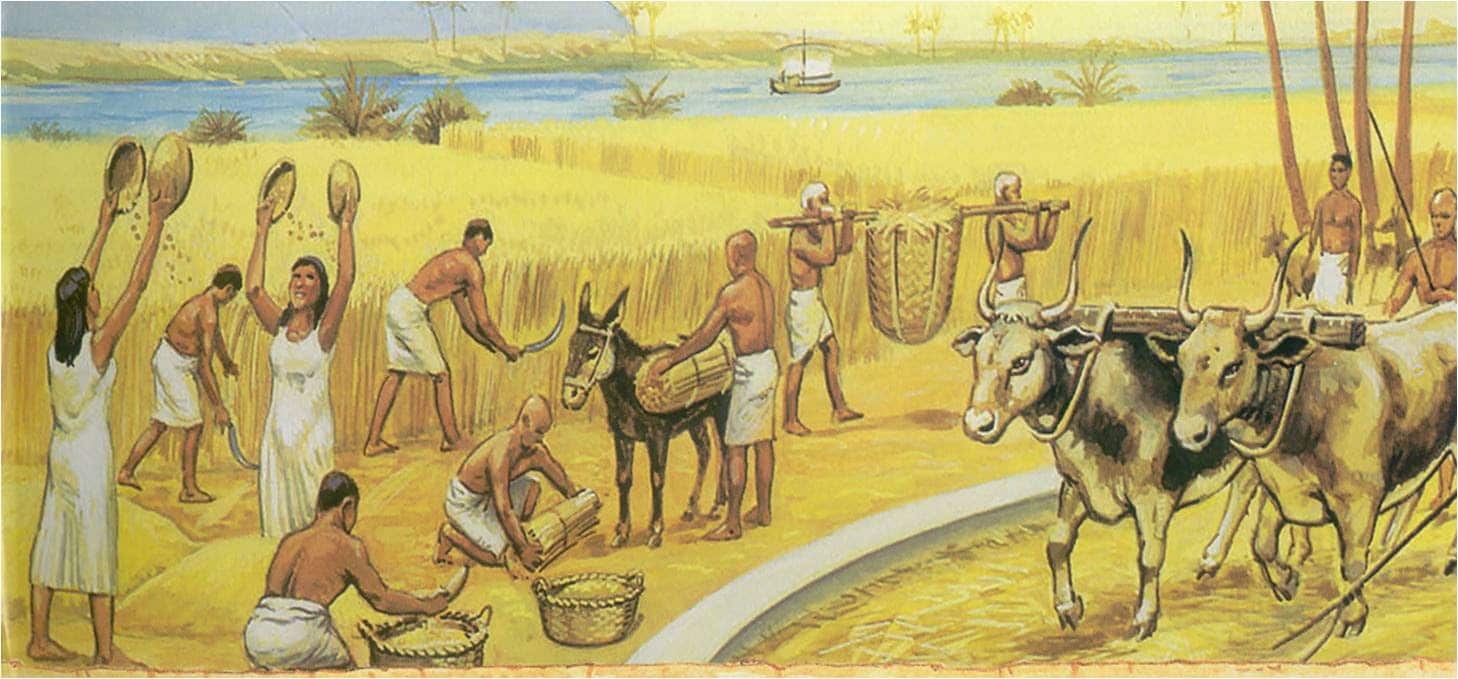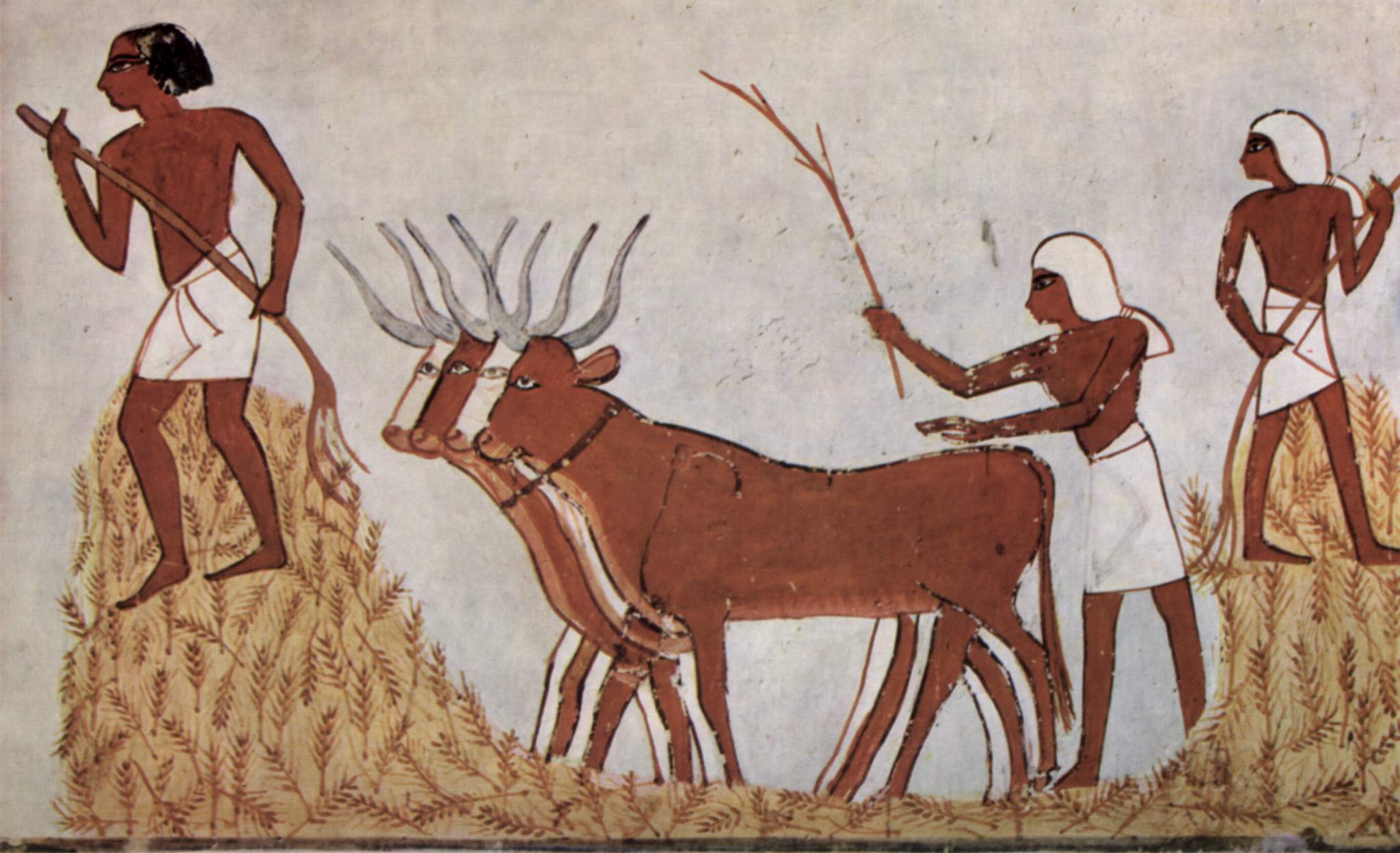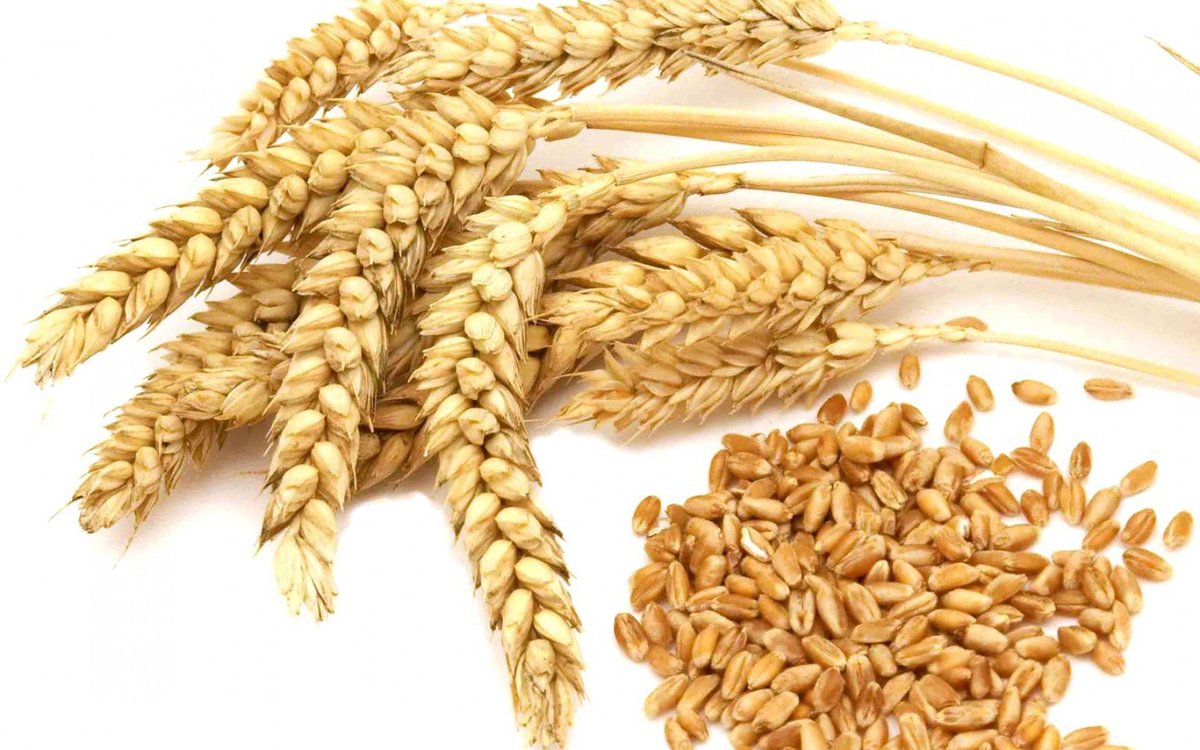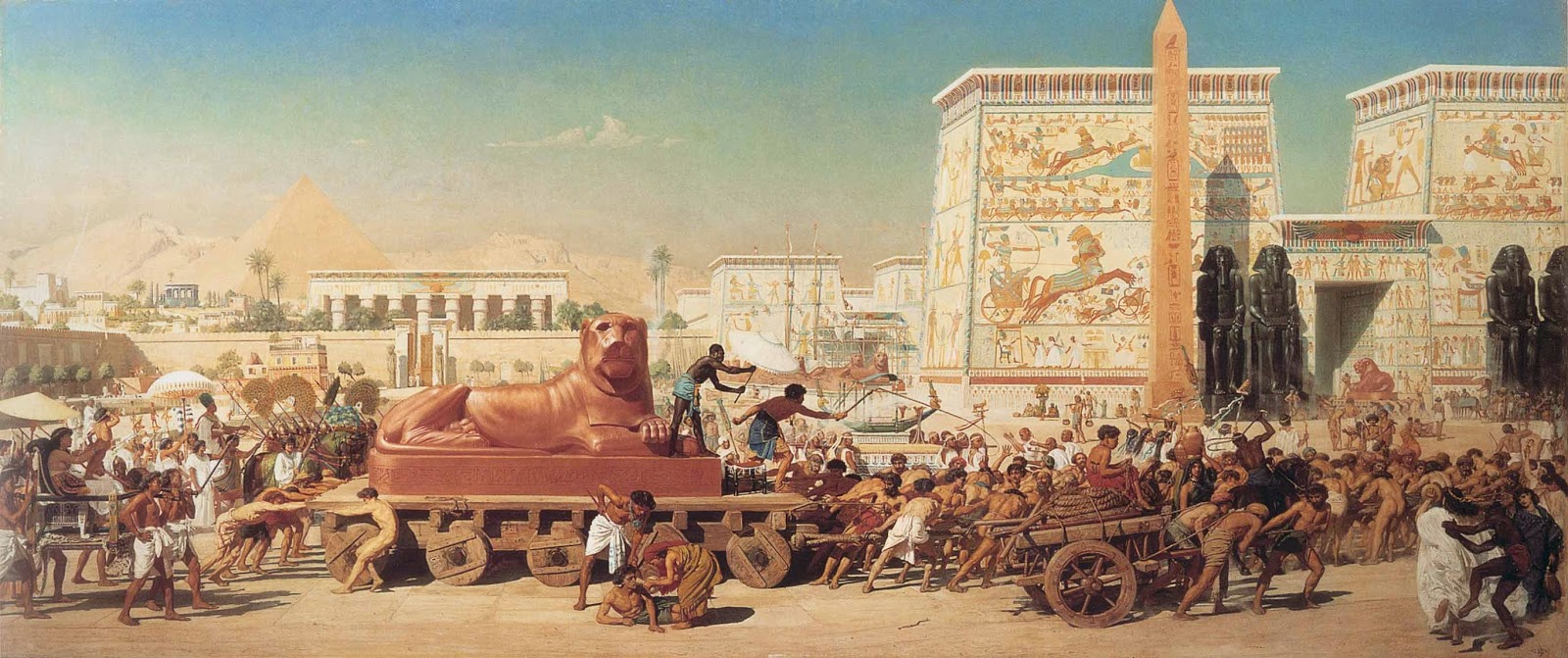Focused primarily on agriculture and trade, the Economy of Ancient Egypt, was like in other ancient cultures, driven and supported by the less favored and numerous social classes. We invite you to learn much more about the economic activities in the land of the pharaohs and the pyramids!

The economy of Ancient Egypt
In this ancient culture, the so-called command economy was applied, where the government power directs, controls and disposes of everything related to the economy of that nation. A specialized bureaucracy was the one that supervised and controlled a large part of the activity, planning and disposing of everything that the different sectors produced.
Obviously the people were practically employees of the state and not private owners, the officials serving as administrators of state farms.
In general, the working class, mainly farmers and artisans, worked for the government class generation after generation. After each harvest or flood, the state reassigned the land based on previous allocations, evaluating compliance with the expected harvests.
Government officials collected part of the product as taxes, stored it and distributed it according to the disposition of the authoritarian state. Stockpiling and redistribution was generally done locally and regionally only in case there was a shortfall at one of the local hubs. The government class was also in charge of public works, which were mostly religious in nature and generally involved thousands of workers and administrators.
Egyptian society can be described as an autarkic or self-sufficient system, in general, after paying taxes, families disposed of surpluses for personal use or were exchanged on the market for what they did not possess.
The percentage of products and resources that reached the markets was probably small, being of little consequence in the survival of the individual producer, but it was part of the economic base for the development of the Egyptian high culture.
Much of the trade, beyond small local exchanges, is thought to have been in the hands of merchants acting on behalf of the crown.
The degree of participation of non-state persons in the trade cannot be estimated, however, it may have been considerable since the market was maintained even during the periods in which the administration collapsed.
Important changes in the traditional barter system began to occur due to the arrival of foreigners and the introduction of currency, minted in the Late Period.
The vast majority of the inhabitants during the first two millennia of Egyptian history were farmers and lived off what the land produced in rural communities, which were characterized by being self-sufficient, but in a condition very similar to serfdom.
The land they worked belonged in theory to the gods, first to Osiris and after his disappearance to Horus, therefore, they were the property of his earthly incarnation, the pharaoh. However, towards the end of the Late Period, land could be freely bought and sold.
Apart from the tenant farmers, a large part of the population worked as day laborers on the estates of nobles and temples. During the New Kingdom, perhaps a third of the land was held by the priesthood, with a considerable number of laborers and slaves. Administrators, priests, merchants, and artisans lived mainly in the cities along the Nile, as these settlements could be supplied with food relatively easily and cheaply by ship.
Economic activities and sources of wealth
Different activities were developed in ancient Egypt, some more important than others for the economy, but all necessary for the survival of all social classes, especially the less important ones. Among the most relevant activities we have:
Agriculture and fishing
Agriculture generated most of Egypt's wealth, growing mostly grains, vegetables, and fruits. In addition, different types of livestock were raised, including goats and pigs, as well as poultry and Nile fish were caught.
Thanks to annual floods, the soil remained fertile. But the agricultural techniques were not very efficient, the implements were primitive and very few advances and important improvements are noted in this area. On the other hand, harvesting had no major relevance in the economy, but apparently it was a necessary and crucial alternative for the survival of the poorest classes.
Cattle raising was very similar to agriculture, apparently it was left to chance and little effort was made to develop techniques that would make it efficient and abundant. Hunting was an activity for leisure time and generally practiced by the rich.
Fish farming seems to have existed on a small scale, but most of the population ate fish caught in the Nile. Eventually, once the various taxes were deducted, the surplus of everything harvested and raised was sold in the markets.
Crafts
In the economy of Ancient Egypt, a large part of the manufactured products came mainly from the families that produced the raw material, that is, the materials to make them. In this case the work was divided according to gender, generally leaving the processing to the woman. For example, while the men grew flax, the women of the family spun and wove it.
The fish caught by the men, when not consumed immediately, underwent a cleaning and drying process, usually carried out by the women, in order to preserve it longer in the hot climate of Egypt.
Small factories appeared in the cities, often financed by wealthy noblemen: bakeries, breweries, carpentry and sewing workshops, among others, with a few dozen employees, where both men and women held some positions.
Mining
In the economy of Ancient Egypt, most of the extracted minerals were of little interest and access to the common citizen, only small groups of wealthy people could take advantage of and benefit from these resources. Precious metals were not seen or available to the population until the Late Period and even then they remained in the hands of a few.
The metals used for tools such as copper, bronze and, from the Late Period onwards, iron, were extremely expensive and the implements made with them were beyond the reach of the vast majority of citizens, especially those dedicated to agriculture. they used to be the poorest.
The less favored social classes continued to use stone and wooden tools for almost all their tasks and purposes, well into the Bronze Age and even beyond into the Iron Age. Gems and precious stones also remained in the possession of a wealthy and powerful minority, who generally used them in temples and tombs. From this circle that possessed stones and gems of great value, the artisans involved in the construction could eventually benefit.
Obtaining minerals such as natron became necessary for the embalming process, which was too expensive an alternative for most people, therefore it was only practiced by a few, mostly the ruling class.
Stores
Local, national or international trade has been a vital part of any civilization since ancient times. Even when a community or country produces and possesses a large quantity of goods, there will always be something that is required and not available, so buying from another that possesses it has always been an option, transforming trade into a necessary and important activity. .
Ancient Egypt was a rich and powerful nation, possessing many natural resources, but even so it was not self-sufficient, which is why it depended on trade to acquire the necessary goods to maintain its luxuries and its status. The trade began in the Predynastic period in Egypt between 6000 and 3150 BC and continued through Roman Egypt in 30 BC and 646 AD.
Throughout its history, the economy of ancient Egypt revolved around the barter system, that is, exchange, without the interference of any currency. But in 525 BC, the time of the Persian invasion, a somewhat different economic system was introduced in the country, where cash began to be used.
Before this time, commerce flourished through an exchange of goods and services based on a standard of value that was considered fair by both parties.
Producers in Egypt had to hand over much of their production to landlords and tax collectors, leaving the surplus for the owner's consumption, and what was left, if this occurred, could be bartered on the open market or sold directly to farmers. consumers.
Little is known about the professional merchants of that time, so it was assumed that they were generally, at least until the Late Period, agents of the crown or government classes.
Banking
In the Ancient Egyptian economy, some of the wheat harvested and owned by private owners was stored in state warehouses and taxed.
Written withdrawal orders from owners of grain plots were also used, as a kind of currency. This style is associated with banking these days and these grain banks continued to serve farmers and traders even after the introduction of money.
Under the Ptolemies a central bank in Alexandria registered all the accounts of the granaries that were distributed throughout the territory. Payments were transferred from one account to another in a similar way to the modern money order system. From the second half of the first millennium BC, gold, silver and copper were used mainly in dealings with foreigners, whether they were mercenaries or merchants.
Energy
The main source of energy in ancient times was muscle power provided largely by humans, but domesticated animals played an important role. The animals used in agriculture were donkeys to transport products and cattle for plowing and other heavy work. The use was inefficient, because until now the use of the yoke that rested on the shoulders of the animals and the axes of the plows were subject to the horns of the cows was unknown.
Horses were introduced to Egypt during the Second Intermediate Period between 1800 and 1550 BC and were never given great importance in the different economic activities. They were considered very expensive to maintain, so they were only used by the aristocracy and the military, either for pulling chariots or riding.
Light wheeled vehicles came into use during the New Kingdom and served primarily for war and sport. At this time anything that needed to be carried from one place to another by land, even in arid and desert regions, was transported by humans, donkeys or pulled on wooden sleds.
Wind energy was exploited only for the movement of ships and even in this case it was quite ineffective. The Egyptians were lucky that the Nile flows from south to north and the prevailing winds were from the north, which was enough to carry ships upriver. To sail down the river it was only necessary to furl the sails and let yourself be carried away by the current and some oars to reach the destination.
Fire, as in any society or human group, was necessary to cook and bake food, melt metals, make glass, bake ceramics, and very rarely, to make bricks. High temperatures are required for the handling and working of metals, which was achieved by burning any dry vegetable or animal matter that was at hand.
The heat of the sun, on the other hand, was used very well in the production of mud bricks, which was the most widely used building material in a practically rainless country like Egypt.
War
Military companies were also a source of income, whenever they were obviously victorious, they allowed the growth of the empire, which expanded by conquering new territories, obtaining wealth and power,
Egypt was fortunate in this regard until the Late Period, when it came under the rule of foreign powers, the relatively benign occupations of the Libyans, Kushites, Assyrians and Persians, not compared to how oppressive and dangerous the Roman Empire was, exploiting their provinces mercilessly.
Around the year 31 BC, the Roman Empire dominated Ptolemaic Egypt, which inevitably disappeared as a state.
If you found this article interesting, be sure to check other links on our blog:





